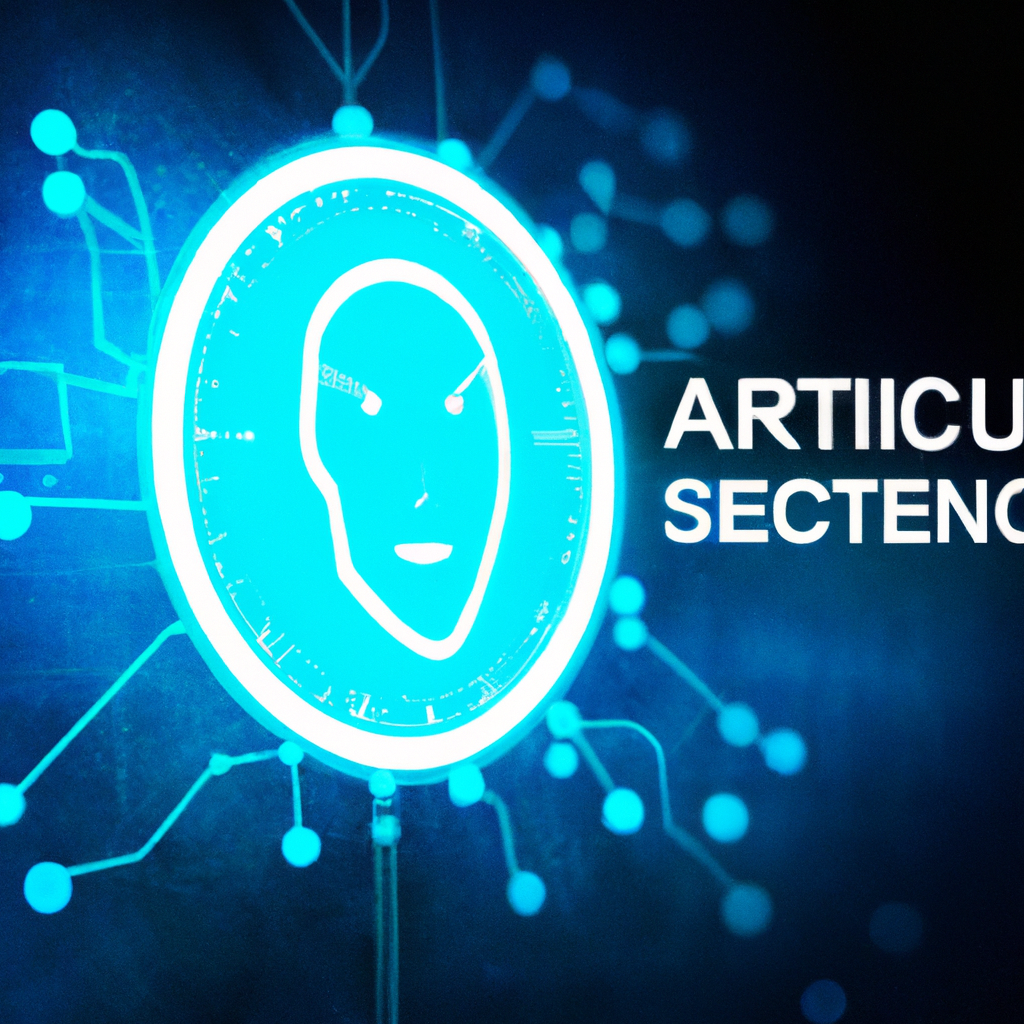-
Table of Contents
of AI in Cybersecurity: Securing the Future.
Introduction
The rise of artificial intelligence (AI) and cybersecurity has revolutionized the way we interact with technology. AI has enabled us to automate mundane tasks, while cybersecurity has enabled us to protect our data and systems from malicious actors. As AI and cybersecurity continue to advance, they are becoming increasingly intertwined, creating both opportunities and challenges. AI can be used to detect and respond to cyber threats, while cybersecurity can be used to protect AI systems from malicious actors. However, the complexity of these systems can also create new vulnerabilities that must be addressed. In this article, we will explore the advancements and challenges of AI and cybersecurity, and how they are impacting our lives.
How AI is Changing the Cybersecurity Landscape
The world of cybersecurity is constantly evolving, and artificial intelligence (AI) is playing a major role in this transformation. AI is revolutionizing the way we protect our data and networks from malicious actors. By leveraging the power of AI, organizations can detect and respond to threats faster and more effectively than ever before.
AI-driven cybersecurity solutions are able to detect and respond to threats in real-time, allowing organizations to stay one step ahead of malicious actors. AI-driven solutions can detect anomalies in network traffic and user behavior, allowing organizations to quickly identify and respond to potential threats. AI-driven solutions can also detect and respond to zero-day threats, which are threats that have not yet been identified by traditional security solutions.
AI-driven solutions are also able to automate many of the tedious and time-consuming tasks associated with cybersecurity. AI-driven solutions can automate the process of patching and updating software, as well as the process of scanning for vulnerabilities. This automation allows organizations to focus their resources on more important tasks, such as responding to threats and developing new security strategies.
Finally, AI-driven solutions are able to provide organizations with valuable insights into their security posture. AI-driven solutions can analyze large amounts of data and provide organizations with actionable insights into their security posture. This allows organizations to quickly identify and address potential security issues before they become a problem.
AI is transforming the way we protect our data and networks from malicious actors. By leveraging the power of AI, organizations can detect and respond to threats faster and more effectively than ever before. AI-driven solutions can automate tedious and time-consuming tasks, as well as provide organizations with valuable insights into their security posture. As AI continues to evolve, it will continue to revolutionize the way we protect our data and networks from malicious actors.
Exploring the Benefits and Risks of AI-Powered Cybersecurity
As technology continues to evolve, so does the need for advanced cybersecurity measures. Artificial intelligence (AI) is one of the most promising tools for protecting networks and data from malicious actors. AI-powered cybersecurity solutions can detect and respond to threats faster and more accurately than ever before. However, there are also potential risks associated with AI-powered cybersecurity.
The benefits of AI-powered cybersecurity are numerous. AI-based systems can detect and respond to threats in real-time, allowing organizations to quickly identify and address potential security issues. AI-based systems can also detect patterns in data that may indicate malicious activity, allowing organizations to take proactive measures to protect their networks. Additionally, AI-based systems can be trained to recognize and respond to new threats, making them more effective at protecting against emerging threats.
Despite the many benefits of AI-powered cybersecurity, there are also potential risks associated with its use. AI-based systems can be vulnerable to malicious actors who may be able to manipulate the system to their advantage. Additionally, AI-based systems can be prone to errors, which can lead to false positives or false negatives. Finally, AI-based systems can be expensive to implement and maintain, which can be a barrier for smaller organizations.
Overall, AI-powered cybersecurity solutions offer a number of benefits that can help organizations protect their networks and data from malicious actors. However, organizations should be aware of the potential risks associated with AI-powered cybersecurity and take steps to mitigate them. By understanding the benefits and risks of AI-powered cybersecurity, organizations can make informed decisions about how to best protect their networks and data.
The Role of Machine Learning in Cybersecurity
Machine learning is becoming increasingly important in the field of cybersecurity. It is a powerful tool that can help organizations detect and respond to cyber threats more quickly and accurately.
Machine learning is a type of artificial intelligence (AI) that uses algorithms to analyze large amounts of data and identify patterns. It can be used to detect anomalies in network traffic, identify malicious activity, and detect malicious files. It can also be used to detect and respond to phishing attacks, malware, and other cyber threats.
Machine learning can be used to detect and respond to cyber threats in a number of ways. For example, it can be used to detect suspicious activity on a network by analyzing network traffic and identifying patterns that indicate malicious activity. It can also be used to detect malicious files by analyzing the code and identifying patterns that indicate malicious intent.
In addition, machine learning can be used to detect phishing attacks by analyzing emails and identifying patterns that indicate malicious intent. It can also be used to detect malware by analyzing the code and identifying patterns that indicate malicious intent.
Finally, machine learning can be used to detect and respond to cyber threats more quickly and accurately. By analyzing large amounts of data, machine learning can identify patterns that indicate malicious activity and respond to them more quickly than traditional security measures.
Overall, machine learning is a powerful tool that can help organizations detect and respond to cyber threats more quickly and accurately. It is becoming increasingly important in the field of cybersecurity and is likely to become even more important in the future.
The Impact of AI on Cybercrime Prevention
The impact of artificial intelligence (AI) on cybercrime prevention is undeniable. AI is a powerful tool that can be used to detect and prevent cybercrime. It can detect malicious activity, identify potential threats, and help organizations respond quickly and effectively to cyberattacks.
AI can be used to detect and prevent cybercrime in a variety of ways. For example, AI can be used to detect suspicious activity on networks and systems. It can also be used to analyze large amounts of data to identify patterns and anomalies that may indicate malicious activity. AI can also be used to detect malicious code and malware, as well as to detect and block malicious websites and emails.
AI can also be used to detect and prevent phishing attacks. Phishing attacks are a type of cybercrime in which attackers attempt to gain access to sensitive information by sending emails or messages that appear to be from a legitimate source. AI can be used to detect and block these types of attacks by analyzing the content of the emails or messages and identifying suspicious patterns.
AI can also be used to detect and prevent data breaches. Data breaches occur when attackers gain unauthorized access to sensitive information. AI can be used to detect suspicious activity on networks and systems, as well as to detect and block malicious websites and emails. AI can also be used to detect and prevent unauthorized access to data by analyzing user behavior and identifying suspicious patterns.
In addition to detecting and preventing cybercrime, AI can also be used to improve security measures. AI can be used to automate security processes, such as patching and updating systems, as well as to monitor networks and systems for suspicious activity. AI can also be used to analyze large amounts of data to identify potential threats and vulnerabilities.
The impact of AI on cybercrime prevention is clear. AI can be used to detect and prevent cybercrime, as well as to improve security measures. AI is a powerful tool that can help organizations protect themselves from cyberattacks and keep their data safe.
The Future of AI-Driven Cybersecurity Solutions
The future of AI-driven cybersecurity solutions is an exciting one. As technology continues to evolve, so too does the need for more sophisticated cybersecurity solutions. AI-driven solutions are becoming increasingly popular as they offer a more comprehensive approach to protecting networks and data.
AI-driven solutions are designed to detect and respond to threats in real-time. This means that they can identify and respond to threats before they become a major issue. AI-driven solutions are also able to learn from past experiences, allowing them to become more effective over time. This means that they can quickly adapt to new threats and provide more comprehensive protection.
AI-driven solutions are also able to detect and respond to threats that traditional security solutions may miss. This is because AI-driven solutions are able to analyze large amounts of data and identify patterns that may indicate a potential threat. This allows them to detect threats that may have otherwise gone unnoticed.
AI-driven solutions are also able to automate many of the tasks associated with cybersecurity. This means that they can take care of mundane tasks such as patching and updating software, freeing up IT staff to focus on more important tasks. This can help to reduce the amount of time and money spent on cybersecurity.
Finally, AI-driven solutions are becoming increasingly affordable. This means that businesses of all sizes can now benefit from the protection that AI-driven solutions offer. This is great news for businesses that may not have the budget for more expensive solutions.
The future of AI-driven cybersecurity solutions looks bright. As technology continues to evolve, so too will the need for more sophisticated solutions. AI-driven solutions offer a comprehensive approach to protecting networks and data, and they are becoming increasingly affordable. This means that businesses of all sizes can now benefit from the protection that AI-driven solutions offer.
Conclusion
AI and Cybersecurity are two of the most important and rapidly evolving fields in the modern world. AI has the potential to revolutionize the way we protect our data and networks from malicious actors, while also providing us with new and innovative ways to detect and respond to cyber threats. However, the development of AI-based cybersecurity solutions is still in its early stages, and there are many challenges that need to be addressed before these solutions can be fully realized. These include the need for better data collection and analysis, improved algorithms, and the development of ethical frameworks to ensure that AI-based solutions are used responsibly. Despite these challenges, the potential of AI in the field of cybersecurity is immense, and its continued development will be essential for the future of our digital security.





